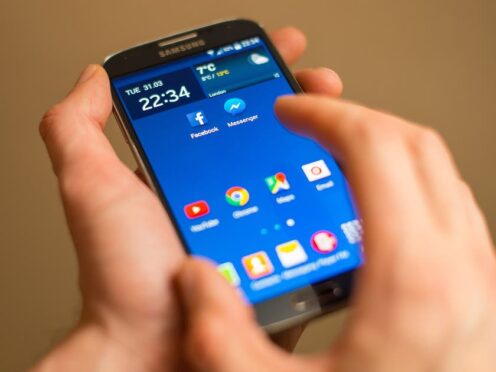
Ministers have moved ahead with a pledge to ban mobile phones in schools, publishing guidance the Department for Education said would ensure consistency in classrooms across England.
The new guidance was hailed as a significant step by Education Secretary Gillian Keegan, who originally pledged to bring forward changes prohibiting mobile phone use in schools at last October’s Tory conference.
The promise was met with scepticism at the time, and one trade union on Monday branded it a “non-policy for a non-problem”.
In England, it is currently up to individual heads to decide their own policies on mobile phones and whether they should be banned.
The guidance, which is non-statutory, instructs headteachers on how to ban the use of phones not only during lessons but during break and lunch periods as well.
It also suggests that staff could search pupils and their bags for mobile phones if necessary, noting that “headteachers can and should identify mobile phones and similar devices as something that may be searched for in their school behaviour policy”.

In a foreword to the document, Ms Keegan said it would provide “clarity and consistency” for teachers and that there is currently “a large variation in how different schools are managing the use of mobile phones”.
In a statement, she said: “Schools are places for children to learn and mobile phones are, at a minimum, an unwanted distraction in the classroom.
“We are giving our hard-working teachers the tools to take action to help improve behaviour and to allow them to do what they do best – teach.”
Tom Bennet, who advises the Department for Education on behaviour, said: “Mobile phones may be ubiquitous, but we have a strong and growing understanding of how damaging they can be for a child’s social and educational development.
“And it’s the least advantaged who suffer most. Many schools already have some kind of policy on phones, but this guidance provides a clear steer for everyone, including parents, about what’s right and what’s not for the wellbeing of the child.
The Government pointed to recent official data that showed 29% of secondary school pupils reported mobile phones being used when not supposed to.
But the Association of School and College Leaders said it did not expect the new guidance to make any discernible impact.
General Secretary Geoff Barton said that the “compulsive use” of devices was not happening in schools but “while children are out of school”.
He said: “Most schools already forbid the use of mobile phones during the school day or allow their use only in limited and stipulated circumstances.
“We have lost count of the number of times that ministers have now announced a crackdown on mobile phones in schools. It is a non-policy for a non-problem.
“The Government would be far better off putting its energies into bringing to heel the online platforms via which children are able to access disturbing and extreme content.”

Enjoy the convenience of having The Sunday Post delivered as a digital ePaper straight to your smartphone, tablet or computer.
Subscribe for only £5.49 a month and enjoy all the benefits of the printed paper as a digital replica.
Subscribe